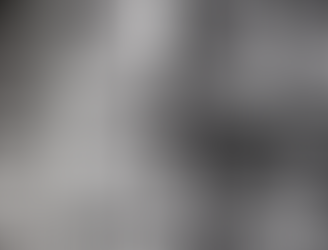LIGHTS - ATA 33. Part 1.
- museedelta
- 16 mars 2022
- 3 min de lecture
In the Concorde Technical Manuals the documentation on lighting represents an important chapter ATA 33.
The information is listed in the following paragraphs:
- Exterior lighting.
- Cockpit lighting.
- Passenger cabin lighting. *
- Service lighting. *
- Last aid lighting. *
* The SA underwent significant modifications during its agencement for ADP guided tours in 1976, the last three parts will not be included in our articles because we do not have enough documents to support our presentation.
Before starting a bit of history:
ATA (Air Transport Association) was created in the early 1950s by bringing together the main stakeholders: aircraft manufacturers, states, certification bodies, airlines with the aim of creating documentary standards and specifications in civil aviation.
We will present here the parts visible outside and in the cockpit.
External Lighting ATA 33-40
Here are the elements visible directly by observing the aircraft:

Navigation and anti-collision lights.
Their function is to give the position of the aircraft on the ground and in flight, there are 3 of them and they are positioned as follows:
- A red light at the end of the left wing.
- A green light at the end of the right wing.
- A white light at the rear tip of the aircraft.

These 3 lights are permanently on.
In the cockpit they are controlled by the ON-OFF switch marked NAV which is located in the rear central panel of the overhead.
Anti-collision lights
Activated anti-collision lights indicate that the aircraft is going to start the engines and make movements on the ground or in flight. They are of the flashing type and are installed:
- A red light on the forward tip of the left wing.
- A red light on the forward tip of the right wing. * *
- A white light on the rear tip of the device which is housed in the same box as the navigation light.


** Photos taken before the spring cleaning, we can see the effects of pollution…

The three lights flash at a rate of 50 to 70 flashes per minute. The three lights are controlled simultaneously by the ON-OFF switch marked ANTI COLN which is also located at the rear central panel of the overhead.

• Landing lights, landing and taxiing lights, turn lights:
This set of lights is used to illuminate the front environment of the aircraft. The first are used during landing, the second during landing and taxiing, the third during taxiing when the aircraft initiates a turn.

On the SA, the panel below was completely rebuilt, wired and made functional by our friend Maxime, like all the landing and taxiing lights

· Landing lights:
Composed of 2 retractable headlights, housed respectively in the front part of the left and right wing, underside near the fuselage joint. Each headlight includes a motor that allows their output.
They are controlled by the MAIN LANDING engraved ON-OFF switches located on the front central overhead panel.

A blue light marked EXTENDED comes on when at least one of the 2 headlights is extended. The headlights retract if the aircraft speed is greater than 365 knots.
The 600 W projectors are controlled by an ON OFF switch located next to the EXTEND RETRACT switch. The lighting of the headlight can only be controlled if the EXTEND RETRACT switch is in the EXTEND position. The 4 inverters controlling the landing lights can be operated separately or simultaneously by an inverter link bar.
A small check of the projector after restoration by Maxime and before its installation on the right wing of the SA.





· Landing and taxi lights:

Are composed of 2 retractable headlights, located on the main hatches of the front axle. These headlights have 2 output positions:
- a position which takes into account the aircraft attitude during the landing phase.
- a "full out" position when the aircraft touches the ground. A motor allows the exit of the headlight whose projector is 2 filaments 600 and 400 W. Controlled by the LANDING TAXI inverter located at the front central panel of the overhead.

A blue light marked EXTENDED illuminates when at least one headlight is extended. The headlights retract if the aircraft speed is greater than 365 knots. The 600 and 400 W projector is controlled by an ON OFF switch located next to the EXTEND RETRACT switch. The 600/400 W switching is obtained by a stage of relays controlled by the landing gear. The lighting of the lamp can only be controlled if the EXTEND RETRACT switch is in the EXTEND position.
The 4 inverters controlling the landing and taxiing lights can be operated separately or simultaneously by an inverter link bar.
· Turn lights:

Composed of 2 headlights, located on either side of the fuselage at the front and at the height of the cockpit.

Each headlight has a 450 W TAXI TURN lamp which is controlled by an ON OFF switch also located on the overhead panel.

To be continued…



















Commentaires